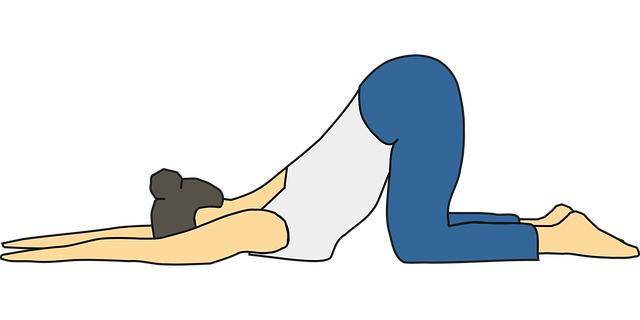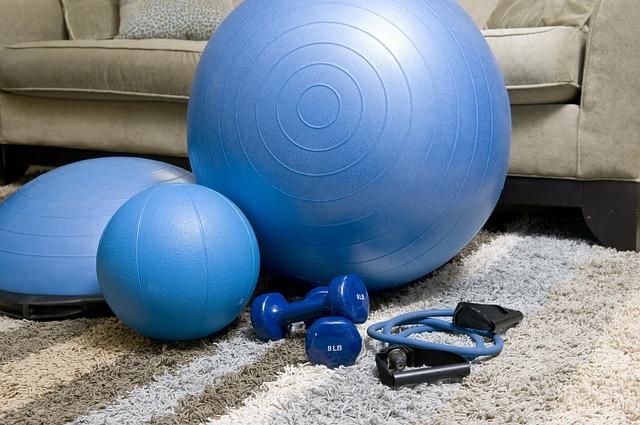Best Daily Exercises for People Who Sit All Day to Improve Posture, Boost Energy, and Prevent Pain
Best Daily Exercises for People Who Sit All Day are essential for maintaining mobility, reducing stiffness, and boosting energy levels in a sedentary lifestyle. Millions of people sit all day at office desks, home workstations, or during long commutes, unaware of how this routine silently impacts their health. Prolonged sitting can lead to tight hips, poor posture, lower back pain, and sluggish circulation all of which affect physical and mental performance over time.
Incorporating simple daily exercises into your routine helps reverse these effects and supports better posture, flexibility, and strength. These targeted exercises for people who sit are easy to perform and require little to no equipment. Whether you are working from home or in a traditional office, committing to the best daily exercises for people who sit all day can help you stay active, improve your well-being, and prevent long-term health issues caused by sitting for extended periods.
To reduce the harmful impact of prolonged sitting, it’s important to include frequent movement and stretching throughout your day. Pay special attention to areas like the hip flexors, lower back, and joints that affect overall mobility. Activities such as brisk walking, lunges, squats, and leg swings can help keep your muscles active. Stretching the neck, shoulders, and spine also relieves tension and supports better posture.
The result? Stiff backs, tight hips, and sluggish energy that sneak up on us before we realize the impact our daily routines have.
But there’s good news. small, consistent movements can make all the difference. Whether you’re chained to your chair by deadlines or simply caught up in the current of a busy workday, incorporating a few targeted exercises can help undo the toll of too much sitting. In this article, we’ll explore the best daily exercises for people who sit all day-simple yet effective moves that restore balance, improve mobility, and help you reclaim your body, one stretch at a time.
Understanding the impact of Prolonged Sitting on the Body
Hours spent in front of screens may seem harmless,but subtle changes begin as soon as the body settles into a chair. Muscles like the hip flexors gradually tighten,the gluteal muscles can weaken,and the natural curve of the spine frequently enough morphs into a slouch. This “new normal” puts extra pressure on the lower back, hampering blood circulation while quietly sapping your energy and focus.
Movement is more than exercise-it’s a powerful antidote to the very real risks of inactivity. Even simple routines can:
- Counteract muscle imbalances by loosening tight hips and shoulders.
- Boost metabolism, staving off fatigue and brain fog.
- Improve ure, reducing aches and warding off long-term spinal issues.
- promote circulation for better heart health and concentration.
The effects aren’t just physical. Extended time in a chair can also contribute to mental sluggishness and mood changes, making it even tougher to break the cycle. Understanding how sitting changes your body gives you the awareness-and motivation-to integrate daily exercise as a form of self-care during or after each workday.
| Potential Effect of Sitting | Typical Symptom |
|---|---|
| Tight Hip Flexors | stiffness after standing |
| Weak Glutes | Sore lower back |
| Poor ure | Rounded shoulders |
| Sluggish Circulation | Cold feet and hands |

Key Stretching Routines to Alleviate Muscle Tension
Sinking into office chairs might potentially be a daily inevitability, but that doesn’t mean muscle tension needs to be your constant companion. Strategic stretching offers instant relief and long-term benefits. The following routines target stiff spots that desk jobs tend to aggravate,releasing lactic acid build-up and encouraging vitality from the neck down to aching calves.
- Neck and Shoulder Rolls: Let your head gently fall from side to side and make slow,controlled circles with your shoulders. This movement soothes cervical tightness and fends off tension headaches common among screen warriors.
- Seated Spinal Twists: Stay in your chair,anchor your hand on the opposite knee,and twist gently. Spinal twists support lumbar health and revive circulation after hours of static ure.
- Standing Forward Fold: Rise, fold at the hips, and dangle your arms. This pose decompresses the spine while stretching hamstrings-a lifeline for sedentary days.
- Hip Flexor Stretch: Step into a staggered stance, lower the back knee (or keep it off the ground for a deeper stretch), and press hips forward. Desk life often shortens hip flexors, so this move is crucial for mobility.
- wrist and Finger flexes: Extend your arms, palm up, and gently pull back on each hand. Typing tension fades and circulation returns to hardworking hands.
| Stretch | Main target | Ideal Duration |
|---|---|---|
| Neck Rolls | Neck & Shoulders | 30 seconds |
| Spinal Twist | Back | 1 minute each side |
| Forward Fold | Hamstrings | 45 seconds |
| Hip Flexor Stretch | hips | 1 minute each side |
| Wrist Flex | Wrists & Fingers | 30 seconds each |
With these easy-to-remember movements woven throughout your day, tension turns into energy and focus. Add reminders to stretch, and let your body thank you for the mindful attention.

Essential Strengthening Exercises for Improved ure
Hours spent at a desk weaken meaningful muscle groups, especially those in the core, hips, and back. To counteract this, incorporating dynamic strengthening exercises into your routine is vital. These moves activate muscles that tend to become dormant throughout long periods of sitting, helping to rebalance your ure and stability with consistent practice.
Key exercises you should weave into your daily routine include:
- Glute Bridges – Wake up your glutes and lower back, promoting hip extension and improving spinal alignment.
- Bird-Dog Reaches – A core stabilizer that enhances coordination while activating the lower back and shoulders.
- Chair Squats – Use your office chair to perform gentle squats, reinforcing quad and glute strength without straining your knees.
- Standing Hip Abductions – combat tight hips and strengthen the lateral stabilizers often neglected during desk work.
- isometric Wall Sits – A powerful static exercise building leg and core endurance crucial for ure.
| Exercise | Main Muscles Worked | Recommended Time/Reps |
|---|---|---|
| Glute Bridges | Glutes, Lower Back | 12-15 reps |
| Bird-Dog Reaches | Core, Shoulders | 10 each side |
| chair Squats | Quads, Glutes | 12-15 reps |
| Hip Abductions | Hip Stabilizers | 10-12 each leg |
| Wall Sits | Quads, Core | 30-45 sec |
Prioritizing these muscle-building moves doesn’t just counteract weakness from sitting-it also brings renewed energy and comfort to your daily life.Rotate these exercises throughout your workday for a foundation of strength, balance, and better ure.

Incorporating Movement into Your Workday for Lasting Benefits
Small, conscious gestures sprinkled throughout your daily routine can transform a sluggish, sedentary lifestyle into one that fosters better circulation, sharper focus, and higher energy. Movement doesn’t always mean an hour at the gym-it’s about weaving restorative activity into work hours. adjusting your surroundings and mindset can champion lasting wellness, making every day a little healthier than the last.
- Set a Stretch Timer: Every 60 minutes, pause for gentle stretches like neck rolls, shoulder shrugs, and wrist flexes. These simple actions combat muscle stiffness common with desk work.
- Chair Squats and Calf Raises: Rise from your seat and perform a few controlled squats or calf raises behind your chair. This quick boost to your routine can spark fresh energy and increase lower-body circulation.
- desk Yoga: Incorporate subtle poses such as seated twists and chest openers. Not only do they keep your joints mobile, but they also clear your mind before diving into the next task.
- Walking Meetings: Whenever possible, switch a sit-down meeting for a stroll. whether indoors or outdoors, walking boosts creativity and helps prevent the mid-afternoon slump.
| Micro-Movement | When to Do It | Benefit |
|---|---|---|
| Neck Rolls | Between emails | Relieves tension |
| Wrist Flexes | Before typing | Prevents stiffness |
| Chair Squats | During breaks | Improves leg strength |
| Seated Twists | After lunch | Boosts digestion |
With just a sprinkle of mindful movement,you’re not only nurturing your body but cultivating a happier,more productive workspace. Embrace these easy, office-friendly ways to uplift both body and mind, one small action at a time.
Key Takeaways
Incorporating simple yet intentional exercises into your daily routine can transform the toll that prolonged sitting takes on your body. Whether it’s stretching tight muscles, activating circulation, or strengthening key areas prone to weakness, these movements serve as essential tools for maintaining health and vitality amid a sedentary lifestyle. Remember, the best exercise is one that fits seamlessly into your day-start small, stay consistent, and listen to your body’s needs. By prioritizing these daily habits, you’re not only combating the hidden risks of sitting but also investing in a stronger, more resilient you.Keep moving, stay mindful, and share these tips with others who could benefit-because wellness thrives when we lift each other up.

